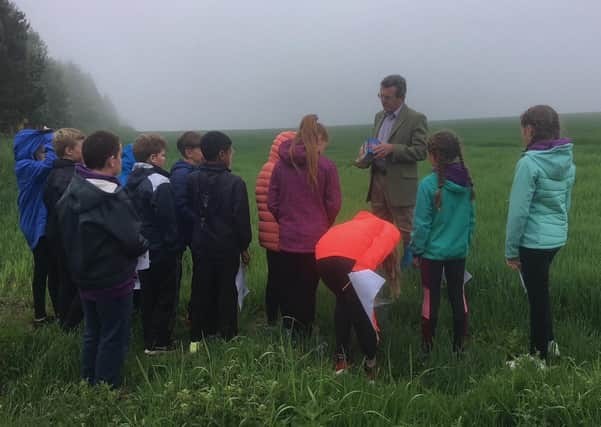There’s an art to teaching kids about the countryside – Iona Laing


Our schools art competition is an example, running in the Perth and Kinross area for more than 15 years, where we have encouraged youngsters to depict in any medium any native UK wild bird or animal in its natural habitat.
Entries have depicted loads of species – not just pheasants and partridges but foxes, puffins, bees and many more.Last year we extended the competition into the Marr Ward, Aberdeenshire, with a healthy uptake from schools in that area and this year, when term starts again in the autumn after what might be quite an extended break, we will be up and running in Angus as well. Possibly one day the concept may go national – we need to work towards that!
Advertisement
Hide AdAdvertisement
Hide AdWhy is this important? Because it makes youngsters think about what happens in the countryside, why our animals and birds thrive or are under threat, and why habitat is precious and important. Pupils are encouraged to research in books and online. We have also introduced a category of creative writing for those who are less inclined to go down the artistic route but who want to include some words as well.
We have been delivering this simple project with the support of sponsors, artists and educators such as Julian Jardine and Mel Shand, and in conjunction with other organisations, the local authorities themselves, the Royal Highland Education Trust (RHET), the Royal Northern Countryside Initiative (RNCI), and not forgetting the schools and their teachers who have been hugely supportive and enthusiastic.
Regrettably, coronavirus has put paid to our flagship event, the GWCT Scottish Game Fair running in July as usual, but it has now been moved to the weekend of 2 – 4 October. If things are back to normal by then our education tent is going to feature art, activities and storytelling.
Also, this year we will have Buglife, displays and presentations by the Angus Glens Moorlands Group, and a bird hide to introduce youngsters to citizen science.The fair also hosts the Junior Macnab Challenge which last year ran in conjunction with the Scottish Country Sports Tourism Group, BASC Scotland, the Game Angling Instructors Association and the National Target Sports Association.
Open to those aged between eight and 18, instead of hunting a stag, shooting a grouse or catching a salmon, they ‘virtually’ compete to hunt rabbit, shoot pigeon and fish for trout. The challenge has been designed to encourage youngsters to take an interest in shooting and fishing and also to get outside and enjoy what the countryside has to offer.
Other activities that we organise for youngsters include farm visits for local schools to our demonstration sites in East Lothian/Midlothian and Fife and to the farming enterprises of other Trust supporters. Farm managers and gamekeepers show the students what happens on the farm, they can hear about crops and food production, how farming and conservation cross over, and why approaches to farming that take wildlife, birds and insects into account are becoming increasingly important, particularly in the light of future subsidy regimes, greening, environmental measures and public goods. Farm visits for classes also form one of the prizes for the art competitions and can provide teachers with a wealth of interesting material and project work.
Finally, the Trust’s demonstration farm at Auchnerran will form an important part of our educational offering. Derelict and unused farm buildings, as funding permits, are being turned into a visitor and education centre and, when that comes on stream, we will have the facilities to increase our educational effort even more. These are little steps, but vital ones to forge the connection between future generations and the countryside.
Iona Laing, education and events Officer, Game & Wildlife Conservation Trust.